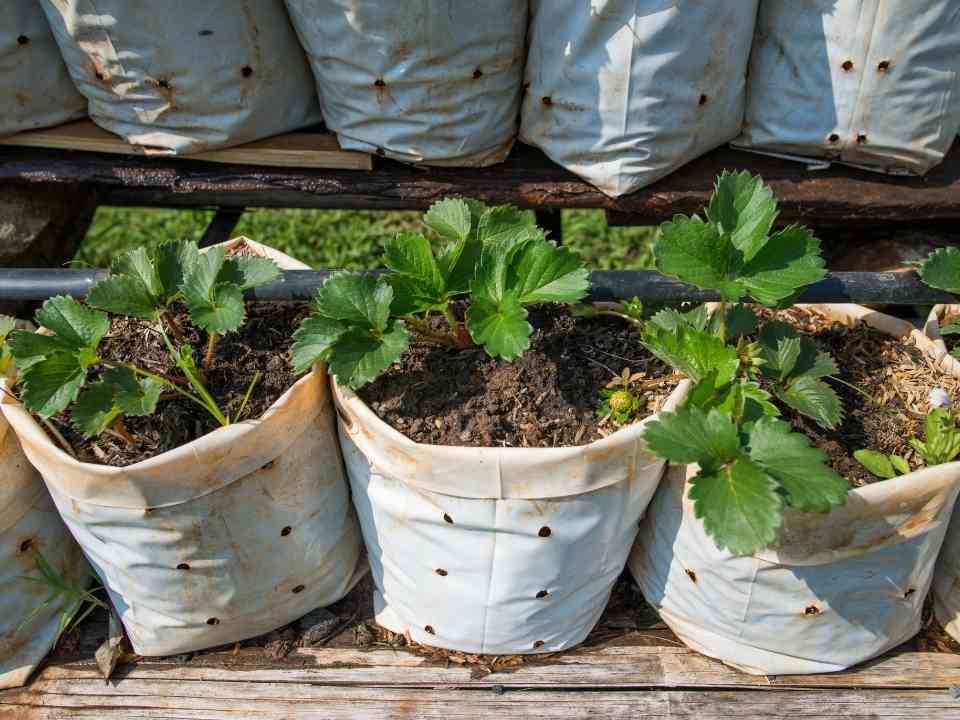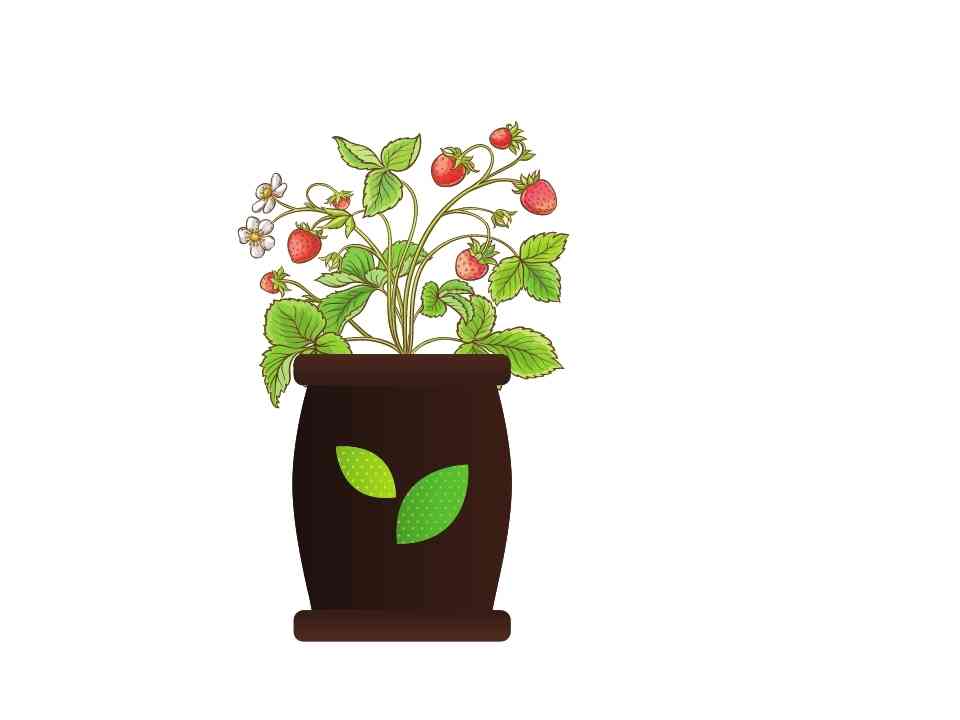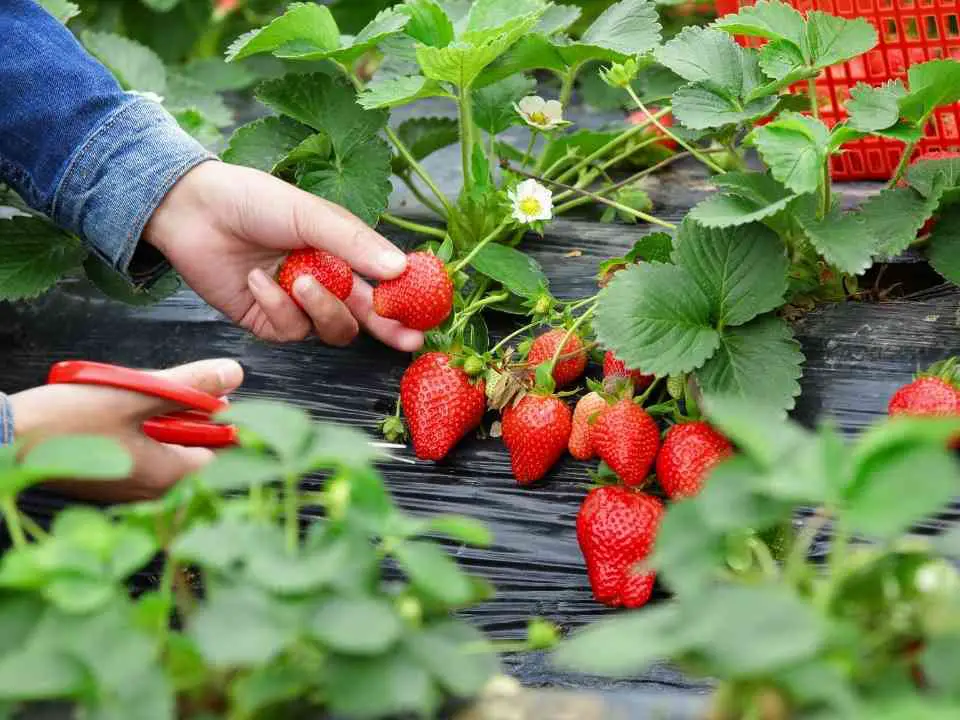Strawberries are not only tasty but are extremely easy to grow. These plants do not ask for much maintenance and the best thing is you can grow strawberries in a tomato grow bag as well.
There are several advantages of growing a strawberry plant in a tomato grow bag over plastic or other pots. Growing your own strawberries is fun and while growing them in a bag, you can easily fit them in your balcony or patio.
Reader Poll: What online courses would interest you?

How to Grow Strawberries in a Tomato Grow Bag?
If you want to know more about how to grow strawberries in a tomato grow bag, keep reading this article.
Planting your strawberries in a grow bag provides you with the best success chances. Grow bags provide the right environment for a strawberry plant to thrive. All you need to do is to give the right, rich, and fertile soil to your plant and a sunny spot.
How Many Plants To Grow in a Bag?
Usually, strawberry plants are small in size and can easily fit in a grow bag. However, remember that like every other plant, your strawberry plant needs space to grow, so plan accordingly. To ensure that your get strong and healthy plants do not plant more than 3 plants in a bag. It makes sure that each plant is getting enough soil volume.
Subscribe to our newsletter!
If you crowd your grow bag with strawberry plants, you may get lush green plants, but most likely you’ll get fewer fruits.
Which Grow Bags to Use for Strawberries?
An important step is to choose the right grow bag for your strawberries. The best grow bag is made up of fabric; these are highly breathable and allow good air circulation. Though you can use traditional plastic tomato grow bags as well. If you use a grow bag with a waterproof liner, water will leak from the sides.
As you might need to move your plants, make sure that the bag you are using has sturdy handles.
Size of the Grow Bag
There are a variety of sizes available in the market. While choosing a grow bag, keep in mind the available space to place them. Note that using a bigger bag wouldn’t give you more strawberries.
The best grow bag size for strawberries is between five to eight gallons. These sizes will ensure that each of your strawberry plants gets sufficient space and adequate soil to grow healthy.
The Best Month to Plant Strawberries
The best months to plant strawberries are March and April; early spring. You can either use fresh runners or get the ones available in cold storage. Generally, strawberry plants bear fruits after two months of their plantation.

Solid for Strawberries in Grow Bags
Strawberries prefer soil with acidic pH and rich in organic matter. Ideally, the pH of the soil should be between 6.5 to 7. The best type of soil for strawberry plants growing in a tomato grow bag is a well-drained gardening mix.
A gardening mix is a mixture of several materials that promote circulation, ensure drainage, and has the ability to hold water. For best results, ensure that the soil has a high content of organic matter. You can add rotted manure or compost in the growing medium as a ratio of 1 part of compost in every 4 parts of soil.
Watering Strawberry Plants
The science of using grow bags is that it pulls down water through your bag. Once you have filled and hung the growing bag, water the plant thoroughly until water starts draining out from the bottom of the bag.
Although strawberries need a lot of water, the root of the plants will rot if the water sits in the growing container. Wet soil makes the growing bag very heavy, therefore, if you want to hang the plant, hang it using strong support.
Fertilizing the Soil
The best is to use a potting mix with additionally added organic matter. However, you can also use fertilizer to provide additional nutrients to your plant. Use 10 percent nitrogen, 10 percent phosphorus, and 10 percent potassium to fertilize the soil of your strawberry plants’ soil growing in a tomato grow bag.

Benefits of Growing Strawberries in a Grow Bag
Growing strawberries in a grow bag has a lot of benefits. Some of the reasons you should consider growing strawberries in a tomato grow bag include:
- Perfect for a Small Space:
One of the most important benefits of using grow bags for strawberry plants is that you can use them almost everywhere. This is especially useful for people who don’t have a proper garden and need to grow their plants on a patio or balcony.
- Easy to Move Around:
Unlike ceramic or plastic containers, grow bags are easy to move around. They are, usually, lighter in weight as compared to other pots and have handles that make moving easier from one point to another point.
- Helps in Regulating the Temperature:
If you are using plastic pots to grow strawberries, they can get hot when you keep them in sunlight. However, most grow bags are made up of breathable material, and thus, you don’t need to worry about getting them overheated.
- Prevent Overwatering:
As discussed earlier, strawberry plants need a lot of water to grow healthy but overwatering can cause root rotting. While growing this fruit plant in a grow bag, you don’t have to worry about this issue as the bag will release any extra water through its walls.
- Nothing to Worry about Ground Soil
As you will be adding soil to the grow bag yourself, you don’t need to worry about your ground’s soil quality. You can add any preferable pot mix and add additional nutrients to the soil as well.
Conclusion
Strawberries are incredibly easy to grow in tomato grow bags. With minimal maintenance, you can use these bags to grow this delicious fruit on your balcony or patio. The whole process of using a grow bag for producing strawberries is simple and even beginners can use it to yield this seasonal fruit.

